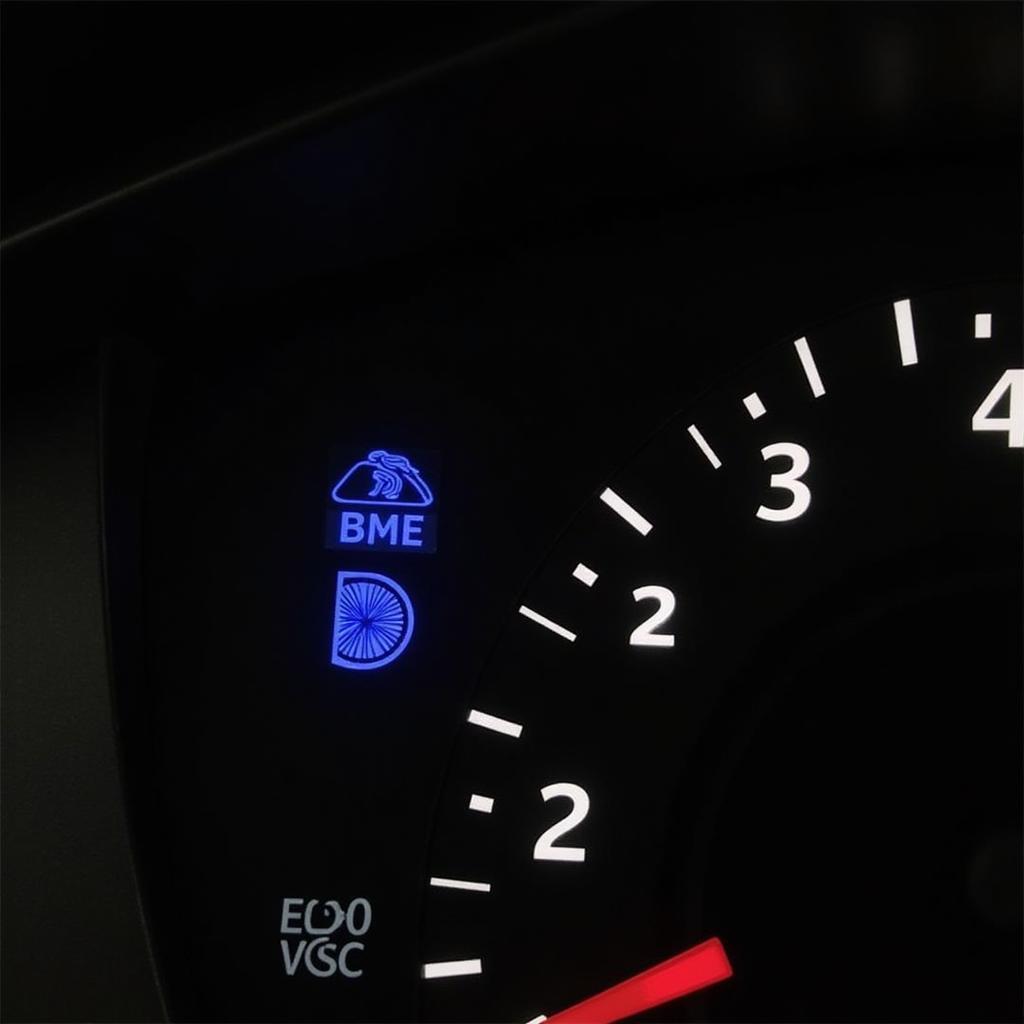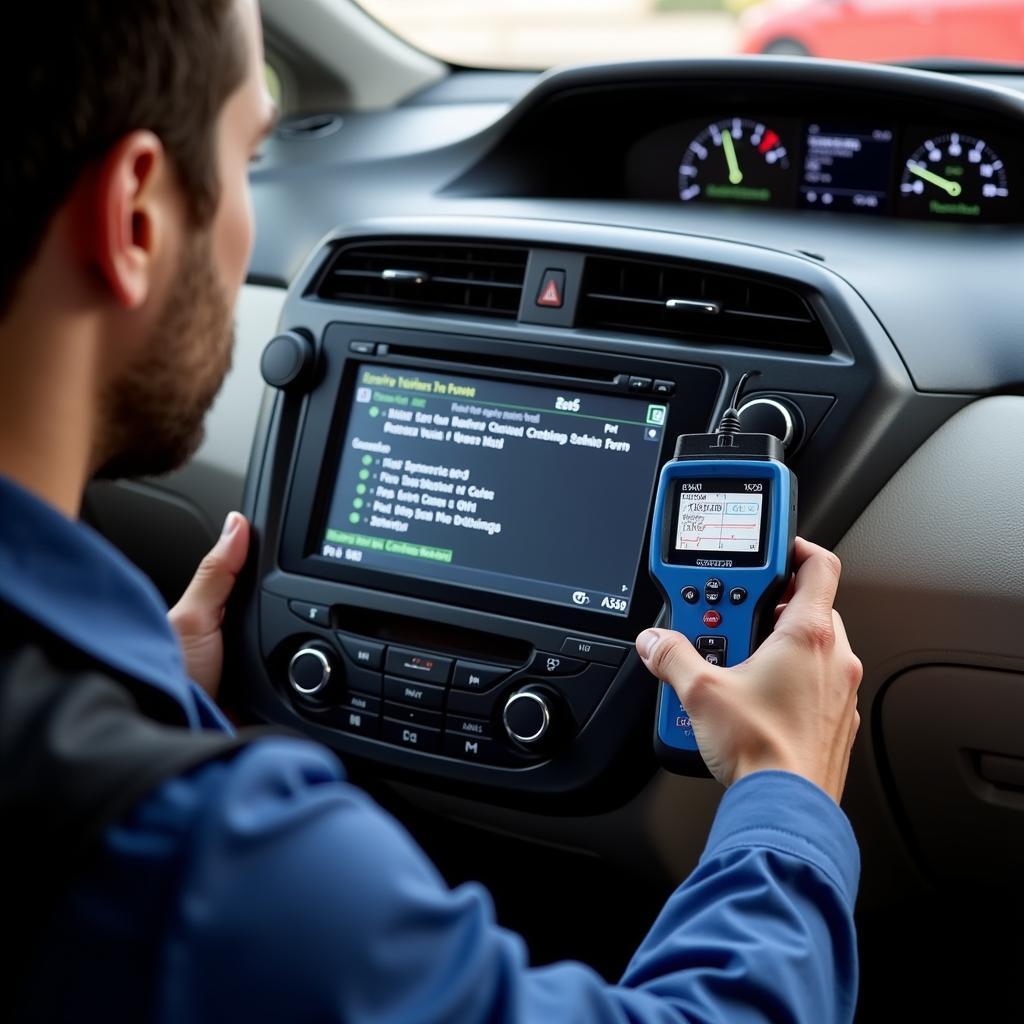The 2008 Toyota Prius is known for its reliability, but like any vehicle, it can experience occasional hiccups. One such issue that owners have reported involves the brake switch warning lights. These lights, often accompanied by other warning signals, can be a source of confusion and concern. This article aims to demystify the 2008 Prius brake switch warning lights, providing you with the knowledge to understand and potentially resolve the issue.
Understanding Your 2008 Prius Brake System
Before delving into the warning lights, it’s helpful to understand the basics of the 2008 Prius brake system. This model features a regenerative braking system, a hallmark of hybrid vehicles. When you press the brake pedal, this system uses the electric motor to slow the car down, converting kinetic energy into electrical energy that recharges the battery. Alongside this, the 2008 Prius also uses a traditional hydraulic brake system for situations requiring more stopping power.
The brake switch plays a crucial role in activating both braking systems. When you depress the brake pedal, the switch sends a signal to the car’s computer, initiating the braking process.
Common Brake Switch Warning Lights in a 2008 Prius
Several warning lights on your 2008 Prius dashboard can indicate a problem with the brake system, including the brake switch. These lights may illuminate individually or in combination, depending on the specific issue:
- Red Brake Warning Light: This light typically illuminates when the parking brake is engaged or if there’s a problem with the hydraulic brake system, such as low brake fluid.
- Yellow Triangle Warning Light: Also known as the Master Warning Light, this indicates a problem detected by the car’s electronic control system, which could be related to the brakes.
- Vehicle Stability Control (VSC) Warning Light: If the VSC light comes on, it could be related to a faulty brake switch affecting the stability control system.
- Anti-lock Brake System (ABS) Warning Light: While not directly related to the brake switch, the ABS light illuminating alongside other brake warning lights could indicate a broader issue within the braking system.
 2008 Prius Dashboard Warning Lights
2008 Prius Dashboard Warning Lights
Why Do the Brake Switch Warning Lights Come On?
Several reasons can trigger the brake switch warning lights in your 2008 Prius:
-
Faulty Brake Switch: The most common culprit is a malfunctioning brake switch. Over time, the switch can wear out, become misaligned, or accumulate dirt and debris, disrupting the signal to the car’s computer.
-
Low Brake Fluid: Insufficient brake fluid can also trigger brake warning lights. It’s crucial to check your brake fluid level regularly and top it up as needed.
-
Worn Brake Pads: While worn brake pads don’t directly affect the brake switch, they can trigger the brake warning light as a safety measure.
-
Other Brake System Issues: Issues with other components within the brake system, like the ABS module or a faulty wheel speed sensor, can also lead to warning lights illuminating on the dashboard.
Diagnosing the Problem
Identifying the root cause of the brake switch warning lights often requires a diagnostic process:
-
Visual Inspection: Start by visually inspecting your brake pedal and the area around the brake switch. Look for any signs of physical damage, loose connections, or debris buildup.
-
Check Brake Fluid: Inspect the brake fluid reservoir. If the fluid level is low, add the recommended brake fluid type for your 2008 Prius.
-
Code Reading: If the warning lights persist, it’s advisable to have the car’s computer scanned for diagnostic trouble codes (DTCs). These codes provide valuable insights into the specific areas experiencing issues.
Expert Insight: “Using a professional-grade OBD-II scanner is essential for accurate code reading. These scanners can access manufacturer-specific codes that provide a more precise diagnosis.” – David Miller, Senior Automotive Diagnostician
 OBD-II Scanner Diagnosing 2008 Prius
OBD-II Scanner Diagnosing 2008 Prius
Potential Solutions and Repairs
The solutions for 2008 Prius brake switch warning lights depend on the underlying cause:
-
Brake Switch Replacement: If the brake switch is faulty, replacement is the most effective solution. While this can be a DIY project for those with mechanical skills, seeking professional assistance is recommended to ensure proper installation.
-
Brake Fluid Flush: Low brake fluid requires adding fluid, but if the fluid appears dark or contaminated, a complete brake fluid flush is advisable to maintain optimal braking performance.
-
Brake Pad Replacement: Worn brake pads require immediate replacement to ensure safe and effective braking.
-
Addressing Other Brake System Issues: For more complex issues identified through diagnostic codes, consult a qualified mechanic specializing in Toyota hybrid systems for proper diagnosis and repair.
Importance of Timely Repair
Ignoring brake switch warning lights can compromise your safety and potentially lead to costlier repairs down the line. A faulty brake switch can result in:
-
Increased Stopping Distance: A malfunctioning brake switch can delay the activation of the braking system, increasing the distance required to bring the vehicle to a complete stop.
-
Engagement of Emergency Brakes: In some cases, a faulty brake switch might trigger the emergency brake system, leading to sudden and unexpected braking.
-
Issues with Other Systems: As the brake switch interacts with other critical systems, such as the VSC and ABS, a malfunction can negatively impact their performance.
Conclusion
The brake switch warning lights in your 2008 Prius should never be ignored. Understanding their meaning and the potential causes can help you address the issue promptly, ensuring your safety and the longevity of your vehicle. While some fixes might be simple DIY tasks, don’t hesitate to seek professional help from a qualified mechanic, especially for complex issues requiring specialized knowledge of Toyota hybrid systems.
